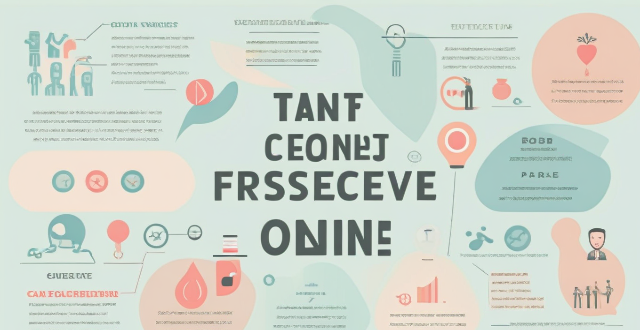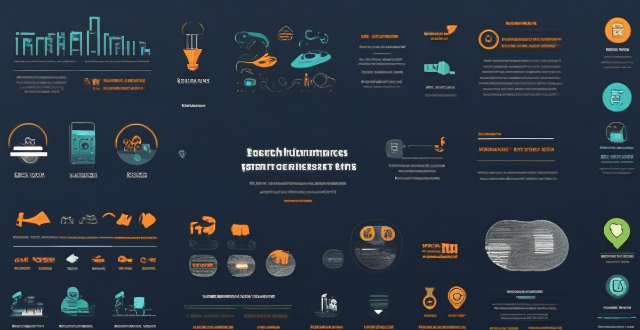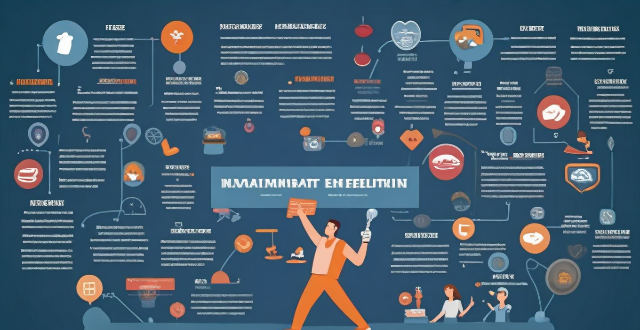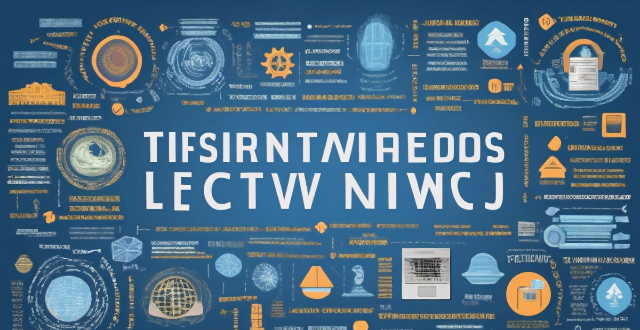Gaming Connection

Is it better to use a wired or wireless connection for gaming consoles ?
When it comes to gaming consoles, the choice between a wired and wireless connection can significantly impact your gaming experience. Wired connections typically offer faster speeds, lower latency, and more stable connections but limit mobility and can create a cluttered setup. Wireless connections allow for increased mobility and a cleaner setup but may have slower speeds, higher latency, and potential interference from other devices. The choice between a wired and wireless connection depends on your specific needs and preferences, such as the type of games you play and the layout of your home.

How does network latency affect online gaming ?
Network latency, or "lag," is the delay in data transmission between a player's device and the gaming server. This delay can significantly impact online gaming by affecting gameplay smoothness, multiplayer interaction, game design, and user experience. High latency can cause input delay, movement jitter, synchronization issues, communication delays, and disconnections, making games frustrating and unplayable. In contrast, low latency offers responsive controls, smooth movement, fair play, effective communication, and an immersive experience. Game developers use optimization strategies like client-side prediction and server-side interpolation to minimize latency's effects. Managing network latency is crucial for maintaining a high-quality online gaming environment.

Can regular exercise be an effective way to prevent excessive online gaming ?
Regular exercise can help prevent excessive online gaming by improving mental health, increasing self-control, enhancing social interaction, and improving sleep quality. While it may not completely eliminate gaming behaviors, it serves as a valuable tool in promoting overall well-being and reducing reliance on online gaming as a primary source of entertainment and social interaction.

How can sports and physical activities help prevent internet gaming addiction ?
Sports and physical activities can help prevent internet gaming addiction by offering alternative forms of entertainment, promoting mental and physical well-being, and fostering social connections. Strategies for incorporating sports include setting fitness goals, choosing enjoyable activities, and involving family or friends to make it a sustainable part of one's lifestyle.

Will upgrading my broadband improve my online gaming experience ?
Upgrading broadband can enhance online gaming by reducing latency and increasing speeds, stability, and bandwidth, leading to smoother gameplay and fewer disruptions. However, it is important to consider costs, hardware compatibility, provider options, and potential trial periods before deciding on an upgrade.

How does engaging in sports impact the likelihood of developing a gaming disorder ?
Engaging in sports can significantly reduce the likelihood of developing a gaming disorder by improving mood and mental health, enhancing sleep quality, increasing socialization, promoting peer pressure and influence, limiting availability for gaming, and fostering a goal-oriented mindset. Maintaining a balanced lifestyle with various activities beyond gaming is essential for overall well-being and preventing potential addictions.

How can schools incorporate sports programs to combat gaming addiction among students ?
Schools can combat gaming addiction among students by incorporating sports programs, promoting physical activity, and mental well-being. Strategies include promoting sports programs, offering a variety of sports, integrating sports into the curriculum, organizing sports events, providing access to facilities and equipment, encouraging participation in extracurricular sports clubs, educating students about the benefits of sports, and collaborating with parents and community organizations.

What role does team sports play in mitigating the risks associated with compulsive gaming ?
Team sports can mitigate the risks associated with compulsive gaming by encouraging healthy social interactions, increasing physical activity, developing time management skills, and reducing stress and anxiety.

Are there specific types of sports that are more effective in preventing internet gaming addiction ?
The article discusses the issue of internet gaming addiction and how sports can be an effective solution. It explains the benefits of physical activity, including improved health and social connections, which can help prevent addiction. The article then lists four types of sports that are particularly effective in preventing addiction: outdoor adventure sports, team sports, individual sports with goals, and yoga/mindfulness practices. Overall, the article emphasizes the importance of engaging in physical activities to promote a healthy lifestyle and combat addiction.

Is there a correlation between the amount of time spent on sports and the incidence of gaming addiction ?
The text discusses the potential correlation between gaming addiction and excessive time spent on sports, considering displacement theory, common underlying factors, lack of social support, and cultural influences. It highlights the need for further research to understand this relationship better and develop prevention and treatment strategies for both conditions.

How fast is fiber optic broadband compared to other types of internet connections ?
Fiber optic broadband is the fastest internet connection type, offering significantly faster speeds and more reliable performance compared to DSL, cable, and satellite connections. Fiber optic broadband has very low latency, making it ideal for real-time applications like online gaming and video conferencing. It is also less susceptible to interference and signal degradation, resulting in more stable and consistent performance. Overall, fiber optic broadband is well-positioned to handle increasing bandwidth requirements due to its scalability and capacity for faster speeds.

How do I troubleshoot a faulty network connection device ?
This text provides a step-by-step guide on how to troubleshoot a faulty network connection device. It starts by identifying the problem, checking physical connections, restarting the device, checking network settings, updating firmware, checking for interference, and finally contacting support if all else fails. The text emphasizes the importance of patience and perseverance in troubleshooting technical issues.

How do I optimize my network connection device for video conferencing ?
Optimizing your network connection device for video conferencing is essential for a smooth and reliable communication experience. Here are some steps to follow: 1. Check Your Internet Speed: Test your connection speed and upgrade your plan if necessary. 2. Choose the Right Hardware: Use a wired Ethernet connection if possible, and ensure that your router and modem are up-to-date. 3. Optimize Your Network Settings: Set up Quality of Service (QoS) on your router and keep its firmware updated. 4. Minimize Interference: Reduce wireless interference and limit bandwidth usage during important video calls. 5. Use a Dedicated Network for Video Conferencing: Create a separate Virtual Private Network (VPN) or invest in business-grade networking solutions. By following these steps, you can optimize your network connection device for video conferencing, ensuring smooth and reliable communication with colleagues and clients around the world.

How do outdoor sports like hiking or mountaineering foster a deeper connection with nature and improve mental health ?
The text discusses the connection between outdoor sports, particularly hiking and mountaineering, and mental health. It highlights how these activities offer physical benefits such as fresh air and sunlight, which boost mood and energy levels, and the release of endorphins through physical activity. Mentally, being in nature encourages mindfulness and presence, reducing stress and anxiety, while the grandeur of nature can provide perspective on everyday worries. Physical challenges build stamina and resilience, with a sense of accomplishment from completing trails or reaching summits. Mental challenges include problem-solving and building resilience. Social interaction through shared experiences and forming supportive communities is also beneficial. Personal growth aspects include self-reliance and adaptability. The mind-body connection is emphasized through the meditative effects of nature and sensory engagement, as well as the physical well-being derived from cardiovascular health and muscle strength. Overall, outdoor sports like hiking or mountaineering provide numerous opportunities for improving mental health through various means.

What is the difference between fiber optic and cable broadband connections ?
The text compares and contrasts two types of internet connections: Fiber Optic and Cable Broadband. It discusses their differences in terms of speed, reliability, availability, cost, and installation. The conclusion suggests that the choice between the two depends on the user's needs and budget.

How can I improve my home's Wi-Fi network coverage ?
The text provides tips on how to improve Wi-Fi network coverage at home, including upgrading the router, changing its location, using extenders or mesh networks, updating firmware, adjusting settings, limiting bandwidth-heavy activities, replacing old devices, and using wired connections where possible.

What are the advantages of fiber optic broadband over other types of internet connections ?
Fiber optic broadband offers faster speeds, greater bandwidth, better reliability, longer distance coverage, and future-proof technology compared to other types of internet connections. It is ideal for activities such as streaming high-definition videos, online gaming, and video conferencing, and can support multiple devices without lag or buffering issues. Fiber optic cables are not affected by electromagnetic interference or noise, ensuring a more consistent and stable connection. Additionally, fiber optic broadband is suitable for rural areas or large campuses where the distance between the provider's infrastructure and the user's location may be significant. Investing in fiber optic broadband is a smart choice for the future as it will be able to support higher speeds and greater bandwidth requirements.

What is the importance of having a good network coverage ?
The text discusses the importance of having a good network coverage in today's world where communication and connectivity are essential aspects of our daily lives. It outlines several reasons why having a strong and reliable network coverage is crucial, including improved communication, better access to information, enhanced productivity, entertainment on the go, safety and security, and business growth and opportunities. The text concludes that having a good network coverage is an integral part of our modern lifestyle and should not be overlooked when choosing a service provider or planning internet usage.

What factors should I consider before upgrading my broadband connection ?
This topic summary discusses the key factors to consider before upgrading a broadband connection, including speed requirements, data caps, reliability, cost, availability, customer support, and additional features. It emphasizes the importance of evaluating current internet usage, future needs, monthly limits, overage charges, downtime frequency, service outages, contract terms, pricing plans, provider options, infrastructure, service quality, user reviews, bundling opportunities, and security measures. The conclusion suggests that by considering these factors, one can make an informed decision that meets current needs and anticipates future changes in internet usage patterns.

How will 5G change the entertainment industry ?
The advent of 5G technology is set to revolutionize various sectors, including the entertainment industry. With its faster speeds, lower latency, and increased connectivity, 5G promises to transform how content is created, distributed, and consumed. In this article, we will explore the potential changes that 5G can bring to the entertainment industry. One of the most significant changes that 5G will bring to the entertainment industry is an enhanced streaming experience. With 5G's faster download and upload speeds, users can enjoy high-quality video and audio content without buffering or lag issues. This means that viewers can watch their favorite movies, TV shows, or live events in real-time, with no interruptions. Moreover, 5G's low latency ensures that there are minimal delays between the broadcaster and the viewer, making it ideal for live streaming events such as sports games or concerts. Another area where 5G can have a profound impact is in virtual reality (VR) and augmented reality (AR) experiences. These technologies require high bandwidth and low latency to function effectively, which makes them perfect candidates for 5G networks. With 5G's capabilities, VR and AR experiences can become more immersive and realistic than ever before. For example, users could attend virtual concerts or sporting events from the comfort of their homes, feeling as if they were actually there. Additionally, AR applications could be used to enhance traditional media by adding interactive elements to books, magazines, or even billboards. Cloud gaming is another area where 5G can make a significant difference. With 5G's fast speeds and low latency, gamers can play high-quality games without needing powerful hardware devices. Instead, they can stream games directly from the cloud, using their smartphones, tablets, or even smart TVs as controllers. This means that gamers no longer need expensive consoles or PCs to enjoy their favorite games; they only need a stable internet connection and a compatible device. Moreover, cloud gaming opens up new opportunities for developers to create more complex and immersive games without worrying about hardware limitations. Finally, 5G can also enable more interactive content creation and consumption. With 5G's increased connectivity and faster speeds, creators can produce interactive videos, podcasts, or other forms of media that allow viewers to engage with the content in real-time. For example, viewers could participate in polls or quizzes during live shows or interact with characters in a movie through AR features on their devices. This level of interactivity not only enhances the viewing experience but also creates new opportunities for advertisers looking to reach engaged audiences.

Is there a connection between sports and happiness ?
The text discusses a study that found a significant, positive connection between sports participation and individual subjective well-being. The study also found that the impact of sports participation on subjective well-being varies depending on the population being studied and that class identity and health play a mediating role in this relationship. Overall, the study highlights the importance of physical activity for improving individuals' overall well-being and suggests that national fitness and health initiatives should be promoted to improve society's overall well-being.

Can you explain the working of HTTP and HTTPS protocols ?
HTTP and HTTPS are two important protocols for data transmission on the internet. The main difference between them is that HTTPS encrypts the transmitted data to protect it from interception and tampering, while HTTP does not. HTTP operates by default on TCP port 80 and transmits data in plaintext, while HTTPS uses SSL/TLS for data encryption and operates by default on TCP port 443. The working steps of HTTP include address parsing, DNS resolution, HTTP request packaging, establishing a TCP connection, sending a request command, server response, and closing the connection. On the other hand, the working steps of HTTPS involve an initial handshake, verifying a digital certificate, session key exchange, encrypted data transmission, and connection closure. With increasing concerns about cybersecurity, HTTPS has gradually become the preferred choice for websites requiring secure data transmission.